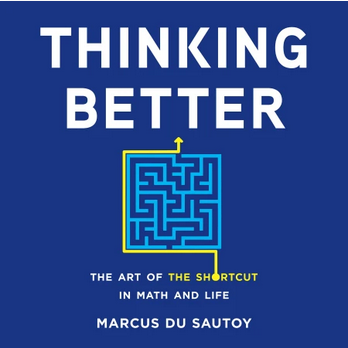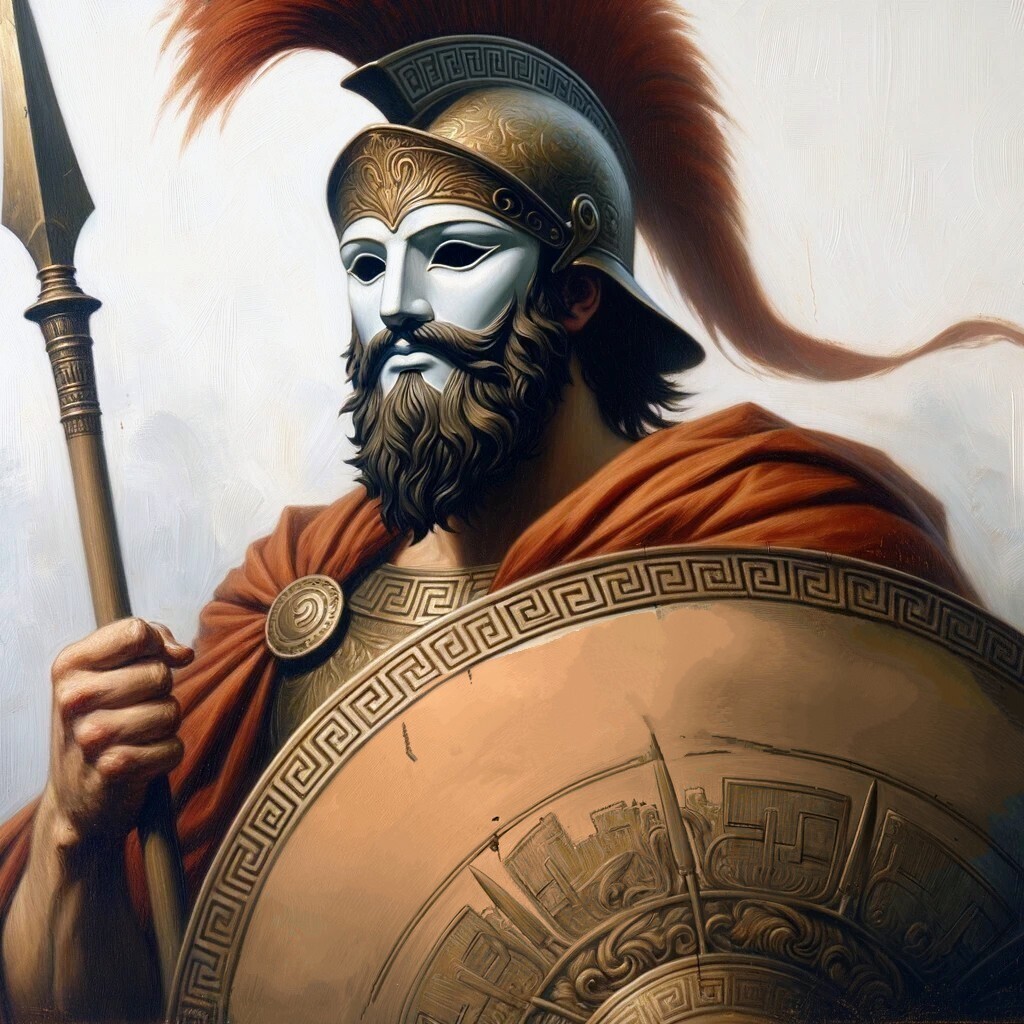That seems complicated.
Average is (100+1)÷2= 50.5
50.5 average x 100 numbers = 5050.
You did essentially the exact same thing in a different order.
(100+1)÷2 × 100
(100+1)x100 ÷ 2
Clever though
The neat thing about math is that you can generally find several different paths to the same solution, and go with whichever is most intuitive to you.
Somewhat long story time.
Because I moved from a different country to the US they got confused what grade to put me in. And then they really goofed my class assignments. So I ended up literally only taking algebra 1 and geometry in high school. Unlike most that also got algebra 2 and possibly trig.
This set me up supery poorly for college. But I’m actually really good at math and I love math. So when I got to college, I failed miserably and dropped out after teachers were telling me this was simple stuff I should know from high school trig. How the college even let me get to that point was also insane…
Anyway years later I went back, they tested me and I needed remedial math classes. Finally this new college was doing it right. I immediately started failing my tests. The teacher actually cared to find out why. I was getting every answer correct, but I was only finishing about 50-60% of the questions. When they looked at my work they noticed I just want using the right formulas in the right places or the common shortcuts and such. At they focused on teaching me that stuff all of a sudden I was actually finishing my tests ahead of class and passing.
Math is weird.
Though sadly ime that is what teachers usually completely fail to convey. And then we wonder why so many people hate math.
I like to imagine These ppl have dark robes and candles cause I dk how they had the thoughts to do this. Just built different.
It’s simply just breaking down a problem into clear, definable pieces, then finding the right tool to solve each piece in sequence. The hard part is learning all the tools you need and matching them with the right problems, but that just comes with time and practice.
I notice a lot of people get intimidated and freeze up. I’ve done quite a bit of tutoring, and for three most part one I can get someone to calm down and focus on little steps, suddenly everything makes more sense.
I think you’d need to prove that the average is (100+1)/2 because that’s not an axiom.
… am I the only one who learned 1+100, 2+99… to make 101 times 50 pairs? Lmao feels like it’s much easier. 101 × 50 = 5050
I’d say it’s fifty-fifty.
The math is the same, you just wrote it more “casually”. For me it was 0+100, 1+99, 2+98 … 49+51 -> 100 x 50 = 5000, then add the 50 that was missed from the middle for 5050. But yeah I remember coming up with that when I was really young.
This is my first time seeing this problem. Interesting that they taught it in school.
Had a statistics and probability class in hs instead of the standard precalc. I feel it’s more applicable for students now than precalc anyways. It felt pretty cool to sit down in class and figure out the odds of winning on a lotto ticket and when the odds indicate you should buy a ticket.
Yeah pre-calc is pretty much remedial math nowadays. You don’t even get 100 level math until you’re at intermediate algebra!
Thinking of it in terms of statistics makes a lot of sense, I can see how this problem would help develop intuitions.
Sorry if this is stupid but how to deal with sums to odd numbers ? Won’t you have a number left over after pairing all the others?
Add the last number onto the end. So the sum of all numbers between 1 and 101 is 50 pairs of 101 plus one extra 101 and the end. It’d end up being 5050 + 101 or 51x101 or 5151
Nope, because what you’re doing is copying the entire sequence, reversing it, and pairing up each element left to right. There’s no way to have any leftovers because the original sequence and the new reversed sequence have the same number of elements.
A perhaps less intuitive way of thinking of it is you start with a sequence of 1 up to N, which contains exactly N elements. The sequence from 1 to N and its reverse together contain 2N elements, which is by definition an even number, regardless of whether N is even or odd. Because it’s even we can break it into pairs without leftovers.
Ah yes, because the goal of teachers is to make their students waste a lot of time.
Well, it does happen
In this case it probably was. Or training however you want to call it
IIRC, In this case the teacher tried to get smart ass Gauss shut up for a bit so he could teach the other students. It was only Gauss that had to solve the problem.
deleted by creator
I always thought like that:
Hmmm: 1 + 2 + 3 + … + 99 + 100
Kommutativgesetz be like: This equals:
100 +1 + 99 + 2 +98 + 3 . . . And this equals: 101+ 101+ 101+ . . .How often do I need to do this? I use up 2 numbers for each 101. I have 100 numbers total. So that’s 50x101.
Now you can think about: What if it’s 1000 instead of 100? But it#s easy from here…
This is why I never succeeded at math. Like why does this shit work?? How can people just take a problem and be like, nah I’m going to just throw numbers all over the place and reassemble them in all sorts of ways and get an answer somehow…
I can’t just memorize arbitrary nonsense that “just is” I need to know how it works or it never sticks and all the math I’ve ever been taught was just “memorize this arbitrary nonsense and regurgitate a specific formula for a specific application that we’ve spent 0 time explaining other than telling you to memorize it. You want proofs and you can’t get proofs until advanced college courses” well guess I’ll just never understand mathematical manipulation then…
I feel like 50/50 school failed me and I failed at math.
You were failed by people who didn’t help you learn intuitions and instead caused you to focus on memorization.
The rules underpinning math are axioms in the end, but they’re not completely arbitrary, because if you change them in most cases it just fucks everything up.
The axioms that were chosen were chosen for good reason, and the rules they result in (such as summation and multiplication being commutative so 3x4=4x3 and 3+4=4+3) allow more complex rules to be created.
There’s a lot of philosophy of math at the core of all this , but it’s not really true that this is all arbitrary.
But commutation is not an axiom, is it?
It’s not arbitrary. Really try to think about the problem at hand. The ‘why’ is quite apparent. Ask yourself why did they go with 99+1+98+2… in the first place? And why is that the same as 101+101…? What was the benefit of simplifying it to that? How did it save the student time?
You can deduce this yourself and literally no memorization is involved to figure this out. No formulas needed either.
Once you have the idea, seeing that it works if often easy. But coming up with ideas like that can be really hard, which is why gauss was the only one in his class who got it. There is no general method, you just have to think about stuff for a while, but you can get better with practice. And it feels really good when you prove something for yourself, even if it’s relatively straightforward. You can just try to prove some simple things yourself, if you want, the advanced college courses are just for proving really advanced stuff.
Look up how to solve it by george polya
It’s just a matter of breaking the problem down Into an easier problem or set of problems.
All the additions are interchangable, so you could choose to add 1+2+3+4 or 4+1+2+3 and then 4+1=5 and 2+3=5 and then youve got 5+5 which is easy its 10. So you go ok you can do the conversion with 1 and 50 except it’s still tough mental math so you say 1 and 100 to get 101 100 times, but that’s twice too big so you slap it in half and you get the answer. It’s solving a tough problem by splitting it into problems that aren’t as tough.
The first step is knowing what tools you have in your belt. The second is knowing how they work in detail. The third part is the inspiration of using them in a way that solves a difficult problem.
I’m not a mathematician, but I’ve found interesting solutions to problems like this before, and it’s fun when you understand your tools and understand the problem and it all comes together to find a solution nobody else would have.
I’m a spatial-visual person, so when presented with this problem as a teenager, I instead solved it spatially. If you stack squares like.
█.
██.
███.
…To the hundredth row, you get a shape that is a half filled square that is 100x100. Except the diagonal is fully filled in, so you need to add another 50.
So the answer was 0.5x100x100 + 0.5x100. Easy to visualize, easy to solve. 5050.
There’s a similar problem in sports – I was a teaching assistant for our rural school’s gym class so this one also popped up for me as a teenager. If you have 100 teams and each team needs to play each other team once… You fill in a similar grid, with the teams on both the x and y axis. The diagonal gets removed in this scenario because a team cannot play itself. So the answer is 0.5x100x100 - 0.5x100. 4950. Anyone who has ever tried to plan any sort of tournament can probably solve this intuitively, but 25 years ago I though I was the smartest gym class teaching assistant ever ;)
The algorithm gets a little weird if you’re summing the numbers to an odd number, though since there will be a left over number you have to deal with . By calculating 2S it works exactly the same in either case.
Ohhhhh
Can also be called a programmer move
Not a good one.
Better than a regular grammer move
That’s an unecesaary rm
Pythagoras ▄︻デ══━一 Gauss
Edit: Oops, that doesn’t quite work without specifying why it obviously needs to be a 101 by 100 triangle, which I can’t do on weed. Something about 1 side including 0-100 maybe?
picture a square that is n times n, grid size 1. cut it diagonaly, you have n²/2, but that leaves out the bunch of triangles that are 1/2 each. how many of these triangles are there? n.
so we are left with n²/2 + n/2.
which is (n² + n)/2.
which is n(n + 1)/2.
edit.: maybe using an irl example like counting steps on a staircase and their area could help ilustrate it better, idk.
Is it required to wear a silly hat to be a genius mathematician? I’ve seen Euler and his hat. But I didn’t realize Gauss was in on it too.
Legends say Sir Isaac Newton never found a hat to fit over the glorious wig.
A Wig is actually just a terribly silly hat
I never made it far enough in math to understand this.
I’ve always seen it explained as (100+0) + (99+1) + (98+2) + (97+3) + …
So you basically have 50 pairs of numbers that all equal 100. So 5000 right? But there is one number that doesnt have a pair to make 100. Which is 50. Obviously there arent two 50s to make 100. So its added by itself. 5050.
Its the same as the summation of 1 to 10. (0+10) + (1+9) + (2+8) + (3+7) + (4+6) + 5. Its 55.
This is how I used to think about it too, back when I didn’t even know what a natural number was
Addition?
There’s a nice book about this: https://www.goodreads.com/book/show/57007645-thinking-better so you can learn.
I… haven’t read it yet, but it’s on my list. I’ve only listened to some interviews with the author about it.

Mathologer has a good video on this topic https://youtu.be/fw1kRz83Fj0?si=_j46BoZHHfcatYnu
I thought it was Euler that did this. But I can imagine Gauss doing it too.
Granted, it’s usually a good bet that Euler did it.
Ahh because Euler did everything
Seeing this meme gives me flashbacks to the 10 Deutschmark bill (I think that was the one)
Just put it in the calculator.
deleted by creator












